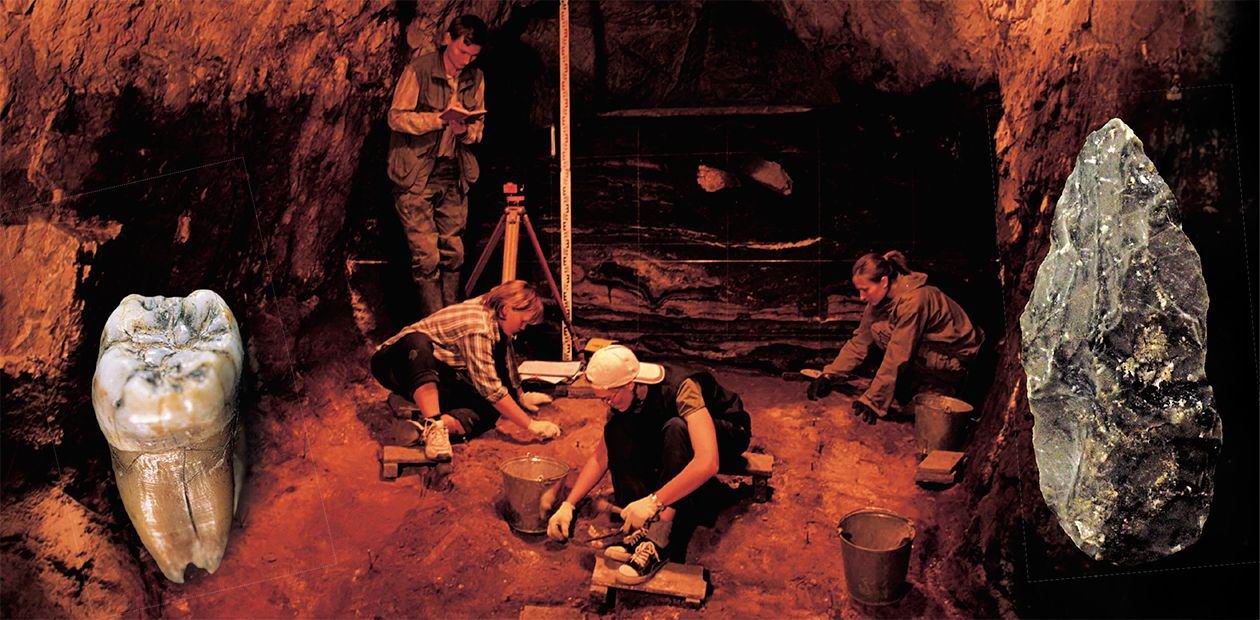The Golden Section of the Anui
Numerous fossil traces of primitive man have been found in many regions of the Old and New World. Archaeologists study these traces and from this study get an idea not only of the place of the origination of man as a biological species in the course of evolution, but also learn about possible paths of formation of primitive populations on the Earth, as well as about the primary structure of human society and its interaction with the natural environment
Judging by archaeological finds of the Paleolith, i.e., the early Stone Age, the inhabited part of the earth was peopled non-uniformly. It is possible to distinguish along ancient migratory ways some relatively localized centers from which gradual spread to contiguous regions occurred. From this point of view, particularly attractive were regions located at the junction of large geographical regions on the archaeological map of Eurasia. Southern Siberia, particularly the Mountainous Altai (Gorny Altai), is one of those regions as it connects North and Central Asia. Initially, the primary settling of the area probably occurred due to a northern wave of migration of the African Homo erectus (upright man) via the Middle East, West and Central Asia about 900—600 thousand years ago.
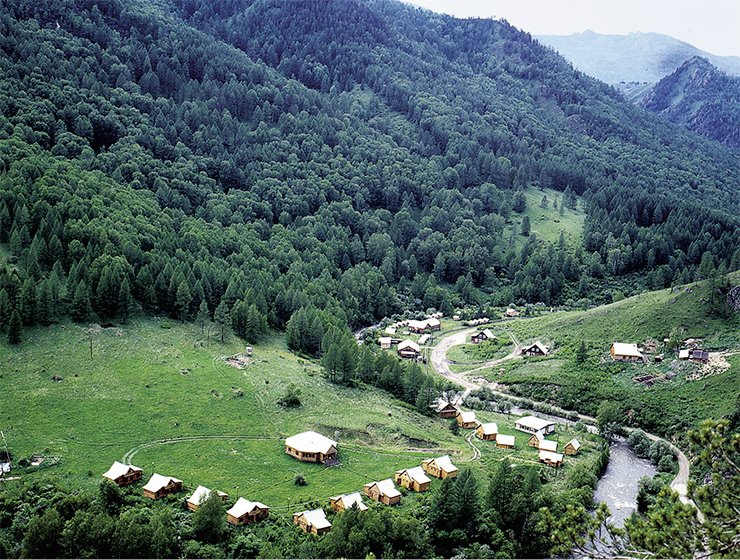
The Altai proved to be a real Siberian treasury of the most ancient archaeological finds of the Paleolith period, though serious study began relatively recently, in the middle of the 20th century. As a result of systematic archaeological investigations carried out by the Institute of Archaeology and Ethnography, SB RAS, under the guidance of Academician A. P. Derevyanko, over the space of several years, a number of unique settlements of the Early Stone Age located in karst caves and river terraces have been discovered. Out of all this natural archaeological exposition, the finds in the Anui River Valley in the northwest of the Altai deserve the greatest attention.
Settlements of the primitive man, gatherer and hunter, were located conveniently in places with abundant plant and animal life. The cozy narrow river valley in the upper part of the Anui River protected by mountain ridges met these requirements perfectly.
The history of the study of the most ancient inhabitants of the valley began in 1959 with the discovery of a few flint flakes and petrified bones of large animals in a cave in the vicinity of the settlement of Iskra. Twenty years later, on the initiative of the outstanding Siberian archaeologist A. P. Okladnikov, a purposeful search for Paleolithic evidence in the caves of the Anui Valley began. As a result, several unique sites, among them the Denisova Cave, one of the main objects of the Altai archaeology, were discovered.
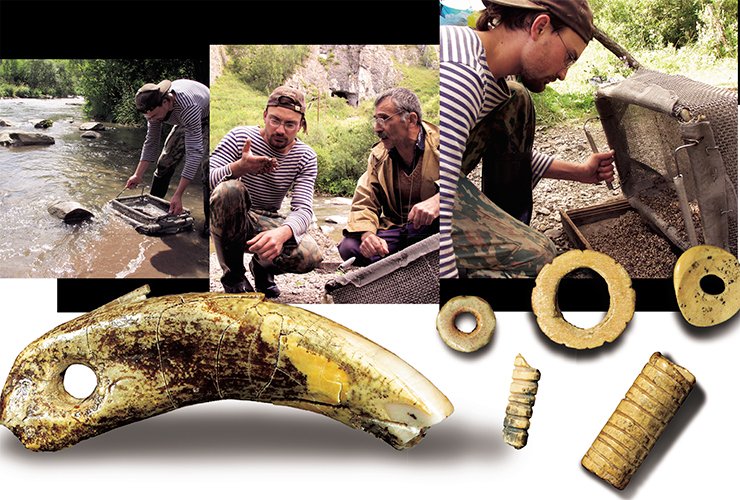
Not only caves (Denisova, Iskra, Okladnikov’s), which were natural dwellings of the primitive man, but also Paleolithic sites of the open type (Karama, Ust-Karakol, Anui-1–3, etc.), were concentrated in that part of the Mountainous Altai. The uniqueness of these archeological monuments lies in the fact that they are multilayered. The heavy thickness of the multilayer deposits formed by successive deposition of the horizons of habitation of the Paleolithic man keeps the chronicle of the basic stages of the primitive epoch.
In the alternation of strata at the Paleolithic sites, not only archaeological artifacts, such as stone tools, flint flakes, ornaments made of stone, bone, and teeth of animals, remnants of bonfires, and other direct evidence testifying to the habitation of the primitive man were discovered, but also plenty of plant pollen, thousands of bones of big and small animals, and other organic remains. This rich assemblage of artifacts and organic substances helps paleo-ecologists to reconstruct in detail the climate and structure of the biocenosis of the Primitive age, to trace the long process of evolution of the environment that surrounded the primitive man in the distant epoch of the Pleistocene.
The earliest evidence of penetration of the Paleolithic man into the Altai is the Karama site dating back 400–800 thousand years. In red-color deposits of the lower Pleistocene, some large-size pebbles were found with roughly chopped-off sharp edges used as primitive stone implements like side scrapers, choppers, and choppings, which constituted the pebble-tool industry typical of the early Paleolith epoch.
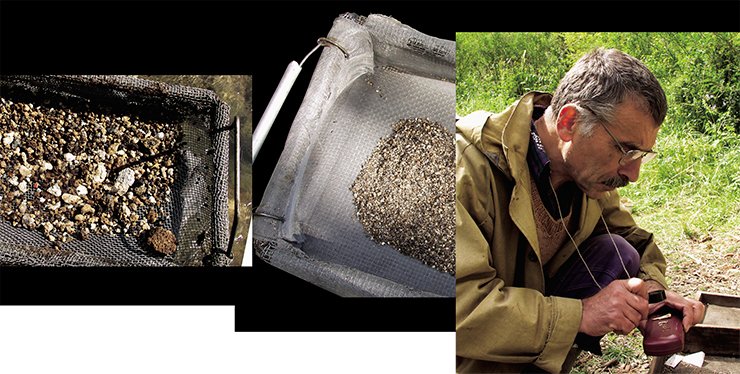
In that age, the climate in the Anui Valley was mild and favorable for the life of the primitive man. The occurrence of such deciduous species as elm, hornbeam, linden, maple, and oak, exotic for the contemporary flora of the Altai, in the birch and pine forests of the region testify to it. Numerous and diverse fauna inhabited the rich vegetation of the forests. Small and medium-sized mammals such as badger, marmot, hare, etc., made a significant part of the diet of hunters of the time. As for large prey, primitive men used to make a living by gathering the remains of meals of such predators as hyenas, wolves, or bears.
About 300 thousand years ago a new period of early ancient history, the epoch of the Middle Paleolith, began. At that time the primitive man started to populate caves actively. The most ancient dwelling of that kind in the Altai and one of the most ancient in Russia is the Denisova Cave. It is located 15 kilometers from Karama, up the Anui Valley.
In the central hall of this comfortable dwelling created by nature, one can see some thin successive layers of deposits making up a stratum 6.5 meters thick; this stratum contains information on the development of the natural conditions and human society in the course of the last 280 thousand years, if not longer.
At the time when our distant ancestors chose the cave as their dwelling, the valley was covered with motley grass and grain steppe that served as pasture for diverse hoofed animals (bison, saiga, red deer, and horse), which were the main hunting prey for the Paleolithic man. Pine and birch forests with an admixture of oak, maple, linden, and elm, the natural habitat of roe, maral, and bear, occupied the lower part of the mountainsides. Above, the slide-rocks covered with bush and grass were inhabited by argali and Siberian billy-goat.
A special method of stone processing called the Levallois technique was the main technical achievement of the Paleolithic man. The technique consisted in chopping off large flakes from a specially prepared fragment of the original stone raw material, i. e., the nucleus. As a result, some large plates and spikes with symmetrically sharp edges were shaped that required almost no further treatment; the obtained tools had a thin profile and were very convenient to work with. Technical achievements in splitting stone made it possible to substantially improve the shape of two primary types of implements, the point scrape and the side scraper.
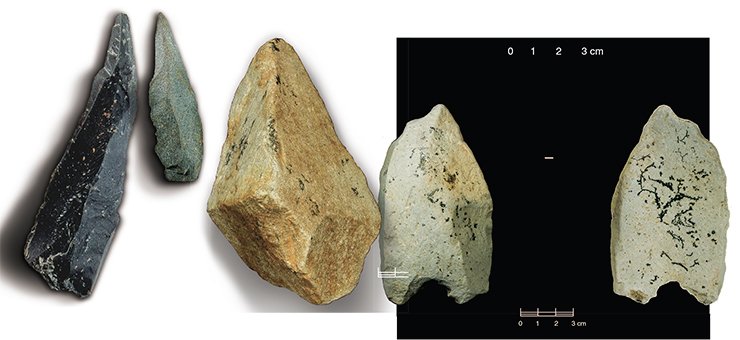
In the subsequent millennia of the Middle Paleolith (120—50 thousand years), the Paleolithic man continued to settle actively the territory of the Altai. In the Anui River basin, the steppe was advancing, which was accompanied by the reduction of the forest area. The number and biodiversity of the forest fauna such as the forest vole mouse and arboreal species of rodents, decreased; whereas the proportion of the steppe and meadow species of animals, on the contrary, increased, both of which testify to this process.
Degradation of the forest ecosystems and formation of extensive steppes and meadows with a thick grassy cover led to increased numbers of large herbivorous animals which constituted the basis of hunting for the Paleolithic man and resulted in the increase of man’s activity in the Anui Valley. This is confirmed by a substantial increase in the amount of stone tools in the deposits of the Denisova Cave, as well as by a sharp reduction in the number of bear’s bones, the main competitor of man for a comfortable dwelling. Additional evidence of the sharply increased disturbance by man is a ten-fold decrease in the colony of bats in the cave.
It is noteworthy that a great number of bones of the cave hyena, a predator of open spaces, yet incapable of a lengthy pursuit of its victim, were found in the cultural layers of that epoch. A stable population of hyenas could exist only on the condition that the quantity of hoofed animals, including young animals, impaired or sick, was steadily high.
The question arises as to how a hyena and man could share the same dwelling. A hyena is known to need a protected shelter for their cubs in spring and early summer. Man primarily used the cave in autumn and winter as a safe shelter from the cold; whereas during warm seasons he stayed at temporary open-air sites on river terraces that had a good field of vision of spacious hunting territory. Besides, the number of bloodsucking parasites, which increased during the winter period, may have been a solid argument in favor of seasonal resettlement of man from the cave. Another point is that the ambient temperature in the cave in summer was much lower than outside. As a result of such justified seasonal migrations, a man and hyena could use one and the same cave, though in different seasons.
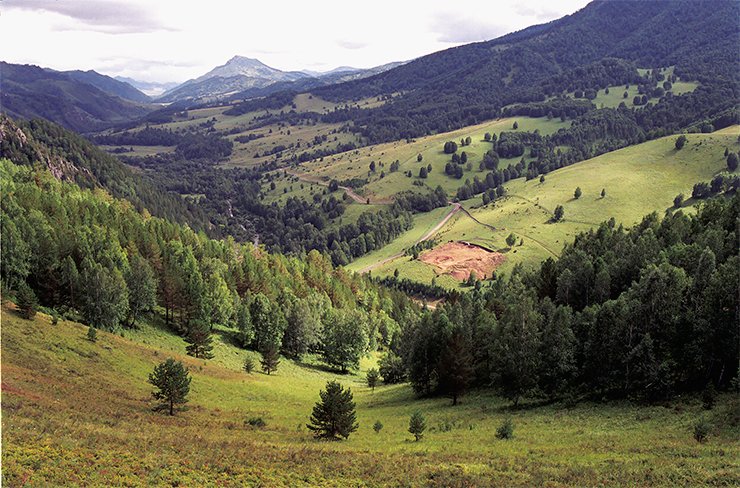
Unfortunately, it is difficult to determine the exact anthropological dating of the Middle Paleolithic population of the Altai mountains since the remains of the fossil hominids are represented here only by several teeth found in two caves, the Denisova and Okladnikov’s. All the teeth except one belonged to children and teenagers. As for other bones, only a small piece of a humerus was found, as opposed to a great number of various animal bones.
According to the American anthropologist K. Turner, the teeth that were found have a number of strongly pronounced Neanderthal features that make their owners closer to the representatives of the European Homo sapiens neandertalensis. However, Russian anthropologists V. P. Alekseev and E. G. Shpakova suggested that, despite some archaic features, they must have belonged to the fossil man of the modern type, the early Homo sapiens sapiens.
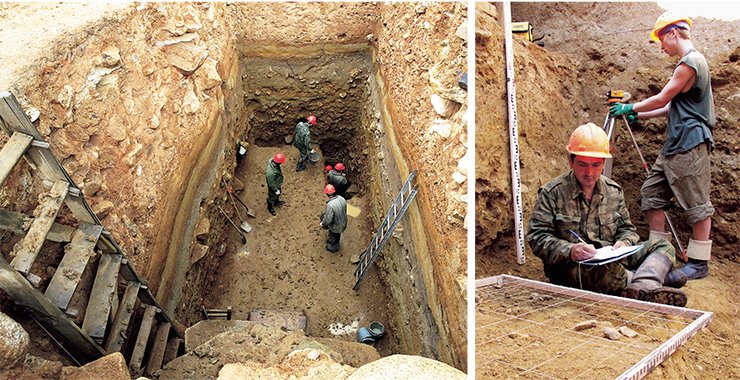
Judging by the state of incisor enamel of a grown-up man from the Denisova Cave, it can be concluded that the conditions of his existence were relatively comfortable, without any strong physiological stresses due to protracted starvation or chronic diseases.
Assemblages of Paleolithic tools provide the most complete information on the life of the primitive man. The absolute majority of the assemblages of stone tools of the Middle Paleolith found in the Altai Mountains belong to the same cultural tradition and have a set of uniform features. At the same time, they are characterized by different combinations of production techniques, as well as by different types of tools, which allows us to divide them into two basic industrial types. In one group, side scrapers of different modifications dominated, whereas in the other group, points and flakes with sharp thin edges dominated. The causes of this differentiation in stone industries should be sought in the peculiarities of economic activity rather than in the division of the population into isolated groups.
The life of the Paleolithic Man could be said to have proceeded in two dimensions, mostly in caves and at hunting camps in some seasons. As an illustration, the distribution and composition of stone artifacts (assemblages of split stones, tools for working them, and various tools) at the multilayer sites of Ust-Karakol and Anui-3 point to sufficiently regular, though comparatively short-term habitation of men there. In such temporary camps, men manufactured mainly special-purpose hunting equipment, i. e., triangular and leaf-shaped points.
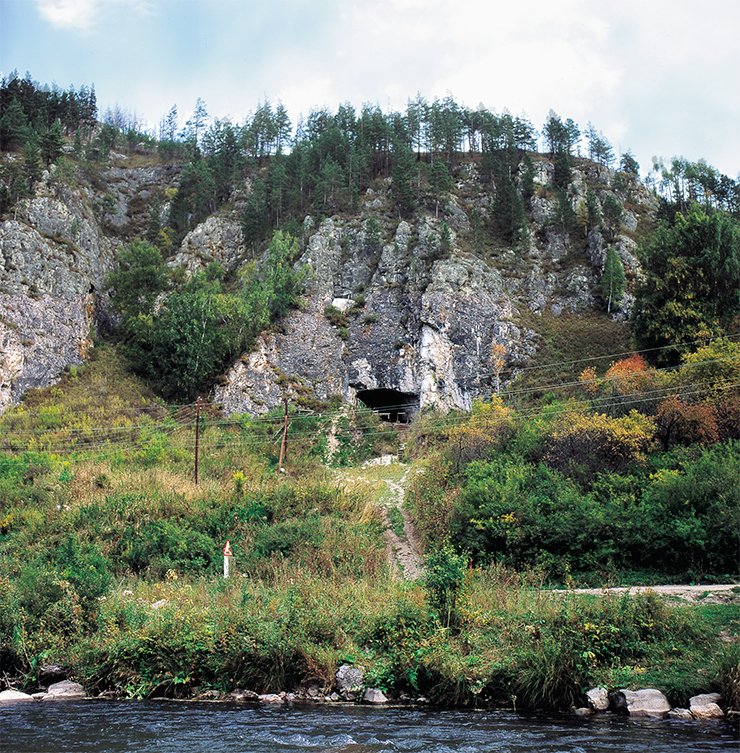
Among the artifacts found in the caves multi-purpose scraping and cutting tools such as scrapers predominated, as well as tools with serrated and notched blades. There were some tools with traces of double-face treatment as well as artifacts manufactured with the classical Levallois technique, though on the whole these traditions were less pronounced than at seasonal camps.
Between 50 and 40 thousand years ago, in the Altai the cultural complex of the Upper Paleolith was gradually formed, on the basis of local traditions.
The beginning of that epoch was marked by a general softening of the climate, expansion of the forested and meadow area, and a high degree of landscape mosaicism, which is confirmed by fauna peculiarity. Argali existed side by side with the Siberian billy goat, woolly rhinoceros, and bison, representatives of different ecological groups. On the whole, natural conditions of the Upper Paleolith were rather unstable, whereas its concluding stage (24—11 thousand years) was accompanied by a progressive fall in temperature. This led to the most pronounced deterioration of the natural environment in the whole period of the Pleistocene. The proportion of herbaceous plants and bushes increased essentially, small forests consisted mainly of dark-coniferous species. Among the animals, cliff and steppe dwellers became predominant; and even the white fox, a typical representative of the tundra, appeared there. Later on, about ten thousand years ago, the climate became milder, forests were restored, and the look of the biocenosis of the Anui Valley began to approach the contemporary one. The holocene, a new geological epoch, began.
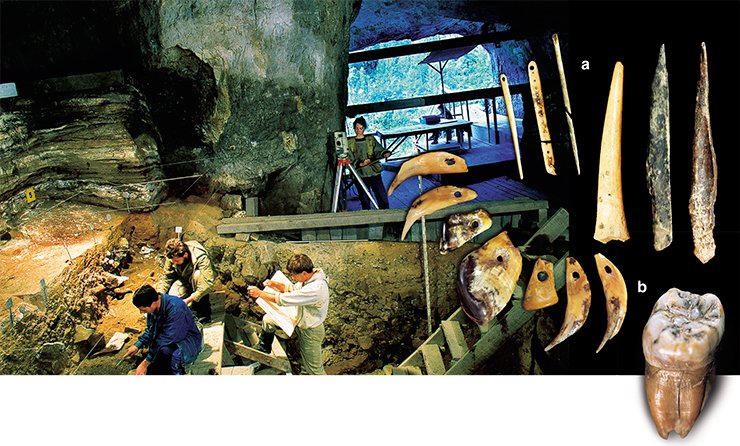
The stone artifacts belonging to the latest period the Paleolith testify to a wide production of narrow thin plates with sharp edges that were used as a basis for various special tools. The novelty is a microplate that served as a blade for composite tools. Tools, and ornaments made of bone were yet another innovation. Miniature needles with a bored eye, punches and pierces with rows of circular threads, beads and rings made of mammoth tusks, pendants made of animal teeth, flat bead-rings made of fossil ostrich egg-shell, all of these artifacts were found in the Upper Paleolithic layers of the Denisova Cave. This unique collection of ornaments is not only the richest, but also the most ancient in North and Central Asia.
It is possible to trace the division of the Altai stone industries into two independent traditions already at the early stage of the Upper Paleolith. The first tradition is connected with the further development of the technique of splitting stone into flakes, as a result of which the basis of many tools were large plates. Besides the Altai, such technologies were discovered in a number of other archaeological regions of Siberia.
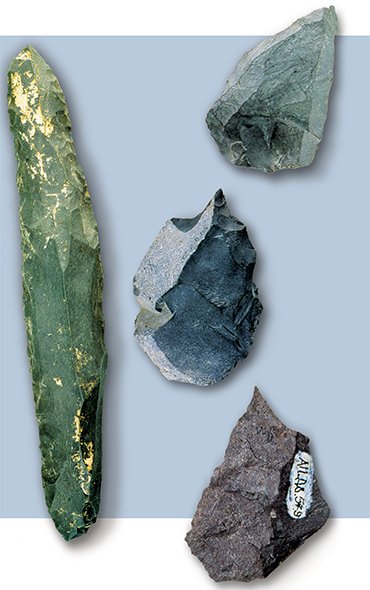 The other tradition developed the technique of microplate flaking and manufacturing leaf-shaped points. Formation of this technological tradition in the Altai in the beginning of the Upper Paleolith must have given a new impetus to the spread of these technologies from the Southwestern regions of Siberia to the East and Northeast. Successively, this area embraced not only all of Eastern Asia, but also the northern part of the American continent.
The other tradition developed the technique of microplate flaking and manufacturing leaf-shaped points. Formation of this technological tradition in the Altai in the beginning of the Upper Paleolith must have given a new impetus to the spread of these technologies from the Southwestern regions of Siberia to the East and Northeast. Successively, this area embraced not only all of Eastern Asia, but also the northern part of the American continent.
Thus, the unique archaeological monuments of the Anui Valley have allowed us to get insight into the life and world that surrounded the ancient population of the Altai, the population that played an important role in the formation of the primitive inhabited part of the vast Asian region.
Today the Anui Paleolithic complex is the most complete and well investigated in North and Central Asia. Its uniqueness lies not only in the fact that many multilayer Paleolithic sites of various types are concentrated in a relatively small area, with the materials from archaeology and natural sciences complementing each other, but also in the interdisciplinary approach to studying these artifacts.
Though the study of the Paleolithic monuments of the Anui Valley is far from being completed, it is, nevertheless, possible to assert that in the epoch of the Paleolith, the northwestern part of the Altai was a kind of oasis sheltered from active influence of ancient glaciation periods thanks to the structure of its mountain relief. A primitive community whose cultural influence extended to the territory of Northern, Central and Eastern Asia, developed in that favorable natural environment.
References:
A. P. Derevyanko, M. V. Shunkov, A. K. Agadzhyanyan, et al. Paleoenvironment and Paleolithic Human Occupation of the Gorny Altai. Novosibirsk. Publishing House at the Institute of Archaeology and Ethnography, SB RAS, 2003.
Stone Age Workshop
Since the old times people have encountered intriguing finds, stones of unusual appearance and shape such as retouched pebbles, pointed stone plates, leaf-shaped flints… Russians sometimes called them witch’s fingers, or thunder arrows. The theory of evolution and fossil anthropological finds accounted for the origin of the majority of these objects. They were made by the primitive man.
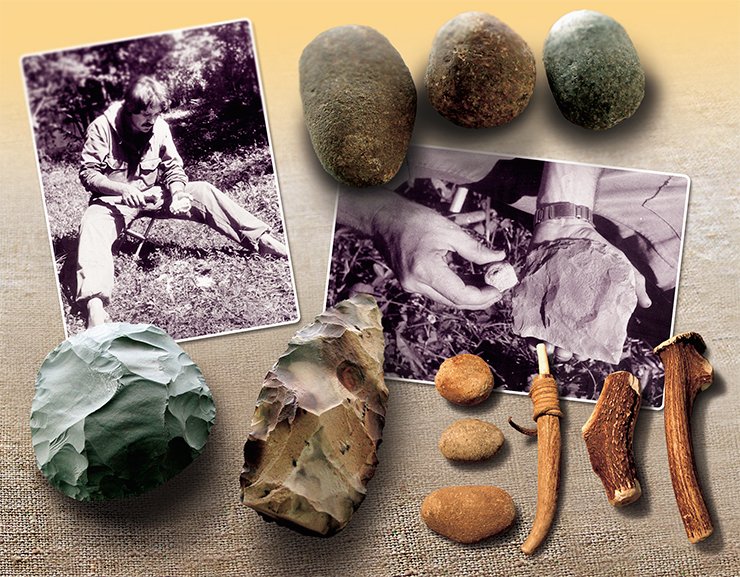
For a long time archaeologists were engaged in studying the external appearance of artifacts that were found; therefore their conclusions concerning those ancient tools were rather speculative and subjective. Eventually, researchers rolled up their sleeves, got down to work and … made a stone axe. This reconstruction of the activity of a primitive man allowed them to understand how tools were produced in the Paleolith. Having compared the traces of abrasion on the surfaces of simulation models with their ancient “prototypes,” archaeologists determined for what purpose and how these tools were used.
The outcome of these archaeological experiments was unexpected. For instance, it turned out that it took our “experienced” contemporary no more than a couple of hours to make a stone axe! On the other hand, the majority of tools that dated back to the early and late Stone Age had hardly any differences in the level of skill and technique of execution. This is something to ponder about…


